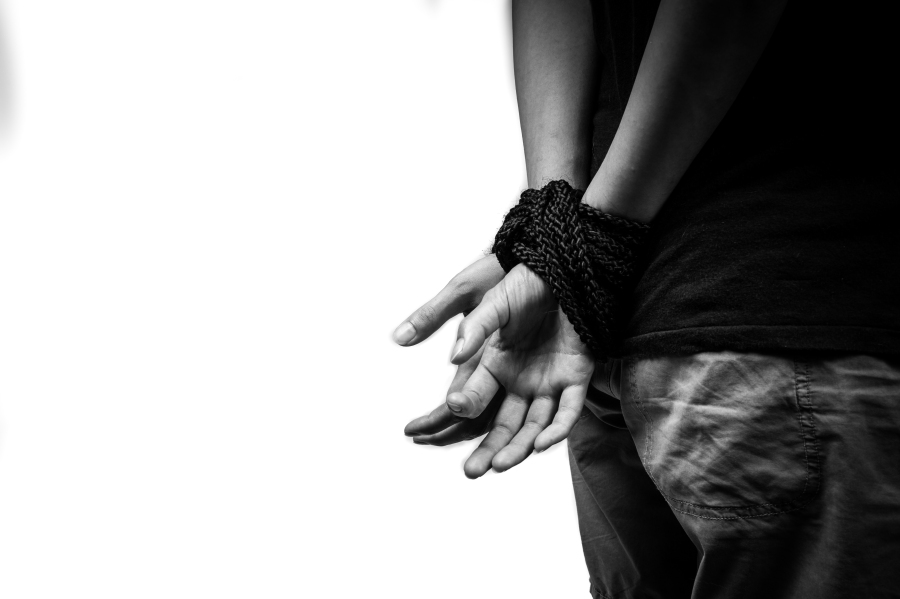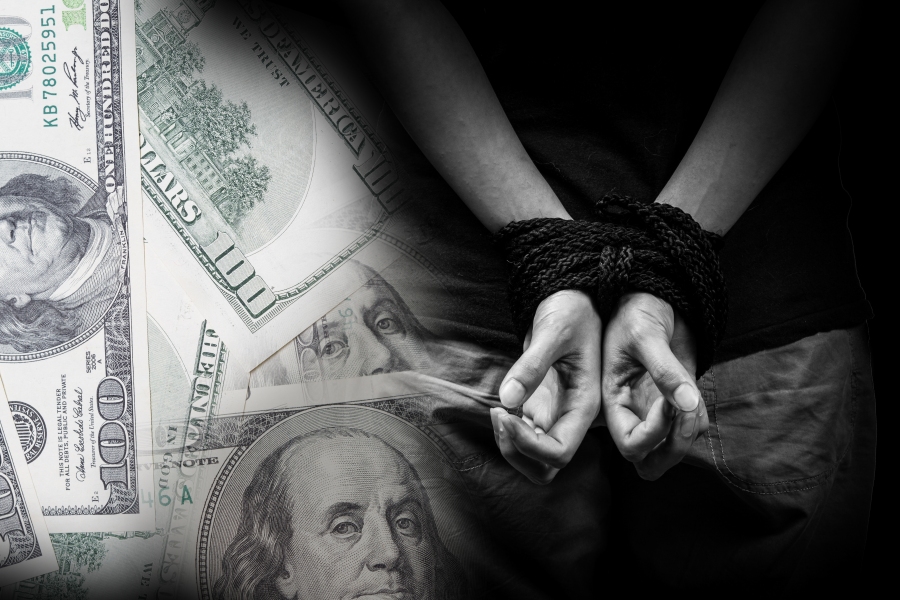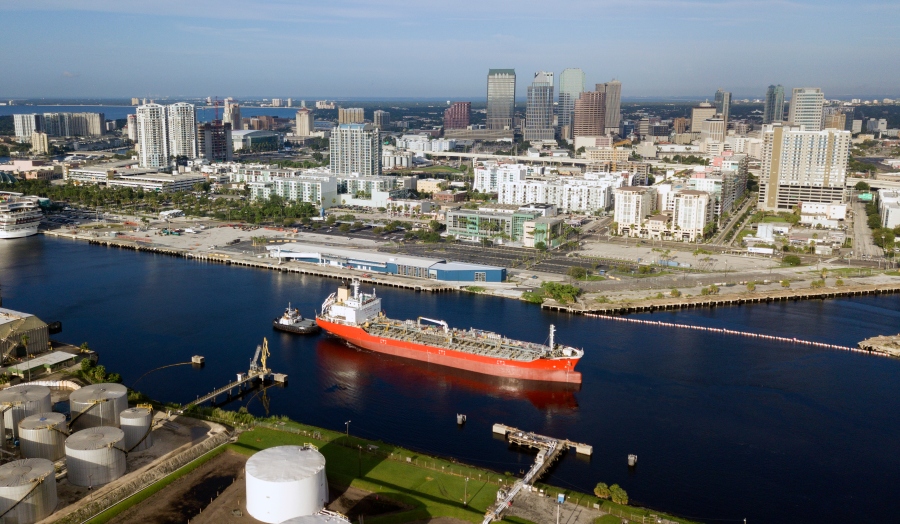Understanding the realities of human trafficking in Tampa Bay
Tampa (BLOOM) – Human trafficking is a pervasive and heinous crime that plagues our world, exploiting millions of individuals each year. To combat this issue effectively, it is crucial to gain a deep understanding of its realities. By shedding light on the scope, victims, contributing factors, and counter-trafficking efforts, we can work towards eradicating this modern-day slavery.

Human Trafficking in Tampa, Florida: Unveiling the Stark Statistics
The presence of human trafficking in Tampa, Florida is a stark reality that demands attention and urgent action. Examining specific statistics on human trafficking in the region provides a glimpse into the extent of this crime and highlights the need for comprehensive efforts to combat it. Here are some key statistics that shed light on the issue:
- Reported Cases: In 2021, there were a total of 234 reported cases of human trafficking in the Tampa Bay area, according to data compiled by local law enforcement agencies and anti-trafficking organizations. This figure represents a distressing reality of individuals who have fallen victim to exploitation and serves as a call to action to address this pervasive issue.
- Sex Trafficking: Sex trafficking remains a significant concern in Tampa. The majority of reported human trafficking cases in the region involve sex trafficking, with an estimated 75% of victims being forced into prostitution or sexual exploitation. This statistic underscores the urgent need to address the demand for commercial sex acts and protect vulnerable individuals from exploitation.
- Age of Victims: Human trafficking affects individuals of various ages, including minors. Shockingly, approximately 30% of human trafficking victims in Tampa are minors, highlighting the vulnerability and targeting of young individuals. Efforts to prevent and combat human trafficking must include comprehensive strategies to protect and support children at risk.
- Online Exploitation: The rise of the digital age has brought about new challenges in combating human trafficking. Online platforms have become a breeding ground for traffickers to advertise and exploit victims. Data reveals that a significant number of sex trafficking cases in Tampa involve online solicitation and recruitment, emphasizing the need for increased awareness, monitoring, and law enforcement collaboration in tackling this form of exploitation.
- Labor Trafficking: While sex trafficking garners significant attention, labor trafficking also poses a significant threat in Tampa. Industries such as agriculture, construction, hospitality, and domestic work have reported cases of labor exploitation. It is estimated that approximately 25% of human trafficking cases in Tampa involve labor exploitation, highlighting the need for robust labor protections and awareness within these sectors.
- Victim Identification and Support: Identifying and supporting victims of human trafficking is a critical aspect of addressing this crime. Data indicates that only a fraction of victims are identified and provided with the necessary support services. Efforts to enhance victim identification and improve access to comprehensive support, including safe housing, healthcare, counseling, and legal assistance, remain crucial in Tampa's fight against human trafficking.
These statistics reveal the harsh reality of human trafficking in Tampa, Florida. They underscore the urgent need for comprehensive prevention, intervention, and support measures to combat this crime effectively. By raising awareness, strengthening collaborations, and supporting organizations dedicated to anti-trafficking efforts, we can work towards eradicating human trafficking and ensuring a safer and more just community for all.
The Scope and Scale of Human Trafficking
Human trafficking knows no boundaries, affecting countries across the globe. Shocking statistics reveal the magnitude of the problem, with millions of people falling victim to this crime. Whether it's sex trafficking, labor trafficking, or child trafficking, these forms of exploitation occur in various contexts, while specific geographical hotspots and routes serve as hubs for trafficking operations.
Factors Contributing to Human Trafficking
Numerous factors contribute to the perpetuation of human trafficking. Socioeconomic conditions, such as poverty, unemployment, and lack of education, create a fertile ground for traffickers to prey on vulnerable individuals. Political instability and conflict zones provide cover for criminal networks to thrive, taking advantage of chaos and desperation. Gender inequality and discrimination further compound the problem, making women and girls particularly susceptible to trafficking. Additionally, the demand for cheap labor and sexual exploitation fuels the continuation of this illicit trade.
The Victims of Human Trafficking

Understanding who falls victim to human trafficking is essential in combating this crime effectively. Trafficking victims come from diverse backgrounds, but certain patterns emerge. Often, they are young individuals, both male and female, who may have limited resources and limited social support. Migrants, refugees, runaways, and displaced persons are particularly vulnerable due to their precarious situations. Traffickers employ psychological manipulation and grooming tactics to ensnare their victims, exploiting their vulnerabilities and coercing them into lives of exploitation and abuse.
The Role of Organized Crime and Networks
Human trafficking is not merely the work of a few individuals; it thrives on organized criminal networks that operate on a global scale. These networks are highly sophisticated, enabling them to transport victims across borders and evade law enforcement. Combating human trafficking requires cross-border collaboration, intelligence sharing, and coordinated efforts between countries and agencies to dismantle these networks and bring the perpetrators to justice.
Impacts of Human Trafficking
The consequences of human trafficking are devastating for the victims. They endure physical and psychological trauma, facing long-lasting effects on their mental and physical well-being. Beyond the individual level, human trafficking imposes significant economic and social costs on communities and societies as a whole, undermining development and perpetuating cycles of exploitation.
Legal Framework and Counter-Trafficking Efforts
Recognizing the urgency of addressing human trafficking, international laws and conventions have been established to combat this crime. However, effective implementation and enforcement remain challenges in many regions. National and local initiatives, bolstered by partnerships between governments, NGOs, and civil society, are crucial in closing the gaps and improving the legal framework to bring traffickers to justice.
Support and Rehabilitation for Survivors
Rescuing victims from trafficking is just the first step in their journey towards recovery. Immediate assistance, such as safe housing, medical care, and counseling, is crucial to address their immediate needs. Long-term rehabilitation and reintegration programs help survivors rebuild their lives, providing vocational training, education, and psychosocial support. Adopting victim-centered approaches that empower survivors is essential in restoring their dignity and helping them regain control of their lives.
Awareness and Prevention Strategies
Raising awareness about human trafficking is key to preventing future victims. Education and awareness campaigns play a vital role in informing communities about the signs, risks, and consequences of trafficking. To effectively combat this crime, efforts should extend beyond awareness to address the root causes. Targeted interventions addressing poverty, education, and gender inequality can help reduce vulnerabilities and disrupt the supply chain of trafficking.
Human Trafficking in Tampa Bay

While human trafficking is a global issue, it is crucial to examine its presence in specific regions. Tampa Bay, a vibrant and populous area in Florida, is unfortunately not immune to the horrors of human trafficking. Understanding the dynamics of human trafficking in this region can help raise awareness, mobilize resources, and strengthen local efforts to combat this crime.
The Geographical Context
Tampa Bay's strategic location, with its proximity to major transportation routes and international ports, makes it an attractive target for traffickers. The region's bustling tourism industry, which includes popular vacation destinations and a vibrant nightlife, also contributes to the demand for exploited individuals.
Forms of Trafficking
Human trafficking takes various forms in Tampa Bay, with sex trafficking being a significant concern. Traffickers exploit vulnerable individuals, often women and children, in illicit sex trade activities. These activities can take place in hotels, massage parlors, strip clubs, and online platforms. Labor trafficking is another area of concern, with cases involving forced labor in industries such as agriculture, construction, and hospitality.
Factors Contributing to Trafficking
Several factors contribute to the prevalence of human trafficking in Tampa Bay. Economic disparities, poverty, and lack of job opportunities make individuals more vulnerable to exploitation. Homelessness, substance abuse, and involvement in the foster care system can further increase susceptibility to trafficking. Additionally, the high demand for commercial sex acts in the region drives the profitability of sex trafficking operations.
Law Enforcement and Community Response
Law enforcement agencies, non-profit organizations, and community groups in Tampa Bay have been actively engaged in combating human trafficking. They collaborate to identify and rescue victims, dismantle trafficking networks, and provide support services for survivors. The creation of specialized units within law enforcement agencies dedicated to combating human trafficking has enhanced response and investigation capabilities.
Awareness and Prevention Efforts
Tampa Bay has seen a surge in awareness and prevention efforts targeting human trafficking. Local organizations conduct public awareness campaigns, training sessions for professionals, and outreach programs to educate the community about the signs of trafficking and how to report suspected cases. By empowering individuals with knowledge and resources, these initiatives aim to prevent victimization and disrupt the operations of traffickers.
Support for Survivors
Recognizing the need for comprehensive support, Tampa Bay offers various services for survivors of human trafficking. Safe houses, counseling, medical assistance, and legal aid are available to help survivors rebuild their lives. Collaborative efforts between service providers and community organizations ensure a survivor-centered approach that addresses the specific needs and challenges faced by survivors.
Continued Vigilance and Collaboration
While progress has been made in combating human trafficking in Tampa Bay, ongoing vigilance and collaboration are necessary to sustain these efforts. Enhanced cooperation between law enforcement, service providers, community organizations, and government agencies is crucial. Continued investment in victim support, funding for prevention programs, and the strengthening of legislative measures are all vital steps toward eradicating human trafficking in the region.
Local Initiatives
In the fight against human trafficking, Tampa Bay has seen the emergence of local organizations, task forces, and community-driven projects that are actively working to combat this heinous crime. These initiatives have made significant strides in raising awareness, providing support to survivors, and partnering with various stakeholders to tackle the issue head-on. Here are a few examples of the strategies, collaborations, and notable achievements of these dedicated anti-trafficking entities:
- Tampa Bay Human Trafficking Task Force: The Tampa Bay Human Trafficking Task Force brings together law enforcement agencies, non-profit organizations, and community leaders to enhance collaboration and coordination in combating human trafficking. Their joint efforts include conducting investigations, providing victim services, and raising public awareness. By pooling resources and expertise, they have successfully disrupted trafficking networks, identified and rescued victims, and brought traffickers to justice.
- Selah Freedom: Selah Freedom is a non-profit organization dedicated to eradicating human trafficking and providing holistic care to survivors. They offer a wide range of services, including safe housing, trauma therapy, vocational training, and legal advocacy. Selah Freedom collaborates with law enforcement agencies, medical professionals, and other service providers to ensure comprehensive support for survivors. They have been instrumental in raising awareness through community education programs and survivor empowerment initiatives.
- Bridging Freedom: Bridging Freedom is a Tampa-based organization focused on the restoration and care of child survivors of sex trafficking. They provide long-term residential care, therapeutic services, and education programs tailored to meet the unique needs of these survivors. Bridging Freedom also partners with local schools, law enforcement, and healthcare providers to identify at-risk individuals and offer prevention resources and training.
- Redefining Refuge: Redefining Refuge is a grassroots organization that offers support to adult survivors of human trafficking. They provide safe housing, trauma-informed counseling, and life skills training to empower survivors on their path to healing and independence. Redefining Refuge actively engages with the community through awareness campaigns, advocacy efforts, and survivor-led initiatives.
- Community Partnerships: Tampa Bay's anti-trafficking efforts are further strengthened by partnerships between non-profit organizations, government agencies, faith-based groups, and community leaders. Collaborations such as the Greater Tampa Bay Human Trafficking Task Force, the Hillsborough County Commission on Human Trafficking, and the Tampa Bay Coalition Against Human Trafficking foster coordination, resource-sharing, and the development of comprehensive strategies.
These local organizations and collaborative initiatives have achieved notable milestones in the fight against human trafficking in Tampa Bay. Their dedication, innovative approaches, and partnerships have resulted in increased survivor support, greater awareness, and improved law enforcement responses. Through their tireless efforts, they are helping to create a community that is more resilient, vigilant, and committed to eradicating human trafficking.
It is crucial to support and amplify the work of these organizations, task forces, and community-driven projects through volunteering, donations, and advocacy. Together, they are making a difference in the lives of survivors and working towards a future free from the chains of human trafficking in Tampa Bay.
Understanding the realities of human trafficking is crucial in our collective fight against this abhorrent crime. By comprehending its scope, victims, contributing factors, and counter-trafficking efforts, we can work towards eradicating this modern-day slavery. It is a call to action for individuals, communities, governments, and organizations to join forces, raise awareness, support survivors, and advocate for comprehensive strategies that address the root causes of human trafficking. Together, we can make a difference and ensure a future free from exploitation and suffering.
Here are some reputable links and resources that provide valuable information on human trafficking, including statistics, organizations, and resources related to human trafficking in Tampa, Florida:
- Polaris: Website: https://polarisproject.org/ Polaris is a leading organization combating human trafficking. Their website offers comprehensive information, resources, and data on human trafficking, including the National Human Trafficking Hotline and their Trafficking Data Dashboard.
- National Human Trafficking Hotline: Website: https://humantraffickinghotline.org/ The National Human Trafficking Hotline provides a toll-free hotline available 24/7 to report suspected cases of human trafficking, access support, and receive information. Their website also offers resources, statistics, and educational materials.
- Selah Freedom: Website: https://selahfreedom.com/ Selah Freedom is a non-profit organization offering support and services to survivors of human trafficking. Their website provides information on their programs, volunteer opportunities, and resources for individuals seeking to learn more about human trafficking.
- Bridging Freedom: Website: https://www.bridgingfreedom.org/ Bridging Freedom is an organization focused on the restoration and care of child survivors of sex trafficking. Their website provides information on their programs, events, and ways to get involved in supporting their mission.
- Redefining Refuge: Website: https://www.redefiningrefuge.org/ Redefining Refuge is a grassroots organization providing support to adult survivors of human trafficking. Their website offers information on their services, survivor stories, and resources for education and advocacy.
This “Eyes on Trafficking” story is reprinted from its original online location.
Fair Use Notice: The PBJ Learning Knowledge Vault is dedicated to advancing understanding of various social justice issues, including human trafficking and related topics. Some of the material presented on this website may contain copyrighted material, the use of which has not always been specifically authorized by the copyright owner. We are making such material available in our efforts to promote education and awareness of these important issues. There is no other central database we are aware of, so we put this together for both historical and research purposes. Articles are categorized and tagged for ease of use. We believe that this constitutes a ‘fair use' of any such copyrighted material as provided for in section 107 of the US Copyright Law. In accordance with Title 17 U.S.C. Section 107, the material on this site is distributed without profit to those who have expressed a prior interest in receiving the included information for research and educational purposes. For more information on fair use, please visit: “17 U.S. Code § 107 – Limitations on exclusive rights” on Cornell Law School's Legal Information Institute.
 ABOUT PBJ LEARNING
ABOUT PBJ LEARNING
PBJ Learning is a leading provider of online human trafficking training, focusing on awareness and prevention education. Their interactive Human Trafficking Essentials online course is used worldwide to educate professionals and individuals how to recognize human trafficking and how to respond to potential victims. Learn on any web browser (even your mobile phone) at any time.
More stories like this can be found in your PBJ Learning Knowledge Vault.
EYES ON TRAFFICKING
This “Eyes on Trafficking” story is reprinted from its original online location.
ABOUT PBJ LEARNING
PBJ Learning is a leading provider of online human trafficking training, focusing on awareness and prevention education. Their interactive Human Trafficking Essentials online course is used worldwide to educate professionals and individuals how to recognize human trafficking and how to respond to potential victims. Learn on any web browser (even your mobile phone) at any time.
More stories like this can be found in your PBJ Learning Knowledge Vault.
